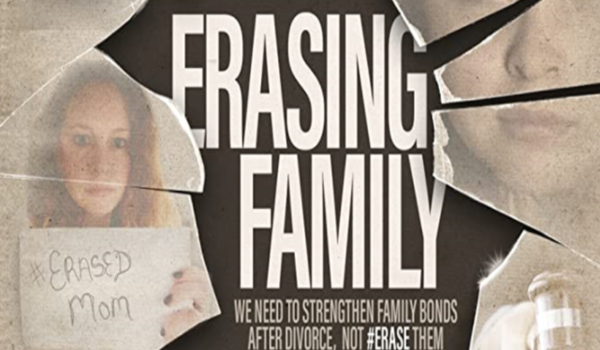
If you are a parent who can’t see their kid after divorce you probably feel like your situation is unique. The other parent will not let you see your kid, the kid says they hate you or the courts will not enforce a custody agreement. You might even feel shame or blame yourself. Friends may not believe that you simply cannot go back to court and the judge will fix everything. But you are not alone. I created the Erasing Family documentary to show how over 25 million families in North America are affected by parental alienation. But I also filmed it to show that through family court reform, awareness, and reaching out to the kids themselves, reuniting is possible.
It all started with a simple Facebook post asking if there were parents who could not see their kids. I was floored by the number of responses from moms and dads who have gone months, years, or even decades without being able to talk to, let alone hug their child. But what really surprised me were the kids who reached out to me saying that they could not see a sibling, or even that they had started YouTube channels to try to find family members and get the judge to change a ruling. These kids were placing the burden of reuniting their families on themselves, and this is what I wanted to capture in Erasing Family.
How the Erasing Family Documentary Reunited Alienated Families
It took me years to find families who were willing to share their intimate stories on screen. In all the families I focused on not only were parents erased from their kids, but siblings also picked different sides and saw their relationships fall apart. All these children were racked by guilt from having to choose a side. The trauma led some to build emotional walls, others to engage in risky behavior, but all felt a sense of sadness and instability instead of joy when it came to family.
These stories include:
- Ashlynn, a beautiful but shattered young woman: After a punitive divorce settlement erased Ashlynn’s father from her life and she was adopted by her stepfather, she learned to never mention her father again. She had no idea he wanted to see her. They reunite when she turns 18 and then together fight to reverse her adoption by her stepdad and reunite with her sister who still thinks of their dad as a monster.
- 29-year-old Brian, whose stepmother adopted him after convincing him to cut ties with his mother. Will he be able to reunite with his mother, who he still blames for the separation, or is she to be erased from his life?
- Lauren, 12, who lives in Canada and misses her older brother Brandyn, 16. A judge ruled that his father was brainwashing him to hate his mother after the divorce and ordered the family into therapy. But Brandyn ran away to England with the help of his father rather than see his mother again. Now, Lauren’s only contact with her brother is via text messages. Will her brother return home or continue to avoid a family caught in a web of restraining orders?
To make the film I developed a network of supporters who crowdfunded almost half a million dollars. The stories were filmed in over 12 locations. We even went to Sweden to show an alternative system and filmed how low-cost, in-court mediation is making a difference in Baltimore County. I talked with judges who have over 2,000 family law cases in their docket and activists fighting for shared custody to become the default, which is an uphill battle as it is opposed by many lawyers but has overwhelming support in polls – 99% approve it in Florida! I finally finished and it premiered in 2019 at Lincoln Center, New York City.
I was motivated to make this film because I too was a child of high-conflict divorce. While my story is considered “normal” and nowhere near as dramatic as those in the Erasing Family documentary, it is my mission to make divorce healthier for kids. Divorce is never a happy moment, but the pain doesn’t have to get worse post-divorce. This passion has led me to create videos that give parents practical advice on how to reunite. I also created a text-line, (865)4FAMILY, where kids and parents can get emotional support and resources. We are also committed to taking this film into schools, universities, and to professional associations.
We know that our campaign is working because we receive messages of gratitude from parents and young adults that the film helped them reunite. But there is so much more to do. If you enjoyed the Erasing Family documentary, the easiest thing you can do is to share it. Share it with other divorced parents. With your lawyer. With any teen – even if they aren’t in a divorcing family, they know kids who are and will share. And if you really want to see change, set up a screening at your local school, university (contact the law school or psych department), or bar association. Some parents are even taking this to their state legislatures.
The film is designed to open hearts and help people realize that they are not alone, but together we can make sure this is the last generation of erased families.
Erasing Family is currently available to watch on Amazon Prime, Tubi, YouTube, Vimeo, and iTunes. We also have created a wonderful community on social media including Twitter, Instagram, and Facebook where people can talk about their shared experience with family courts and custody battles.
Ginger Gentile is an activist documentary filmmaker dedicated to addressing ignored issues and shedding light on solutions. Her documentary Erasing Family premiered at Lincoln Center in 2019 and is currently streaming across platforms. She previously served as the Executive Director of the National Parents Organization. www.erasingfamily.org











Add A Comment